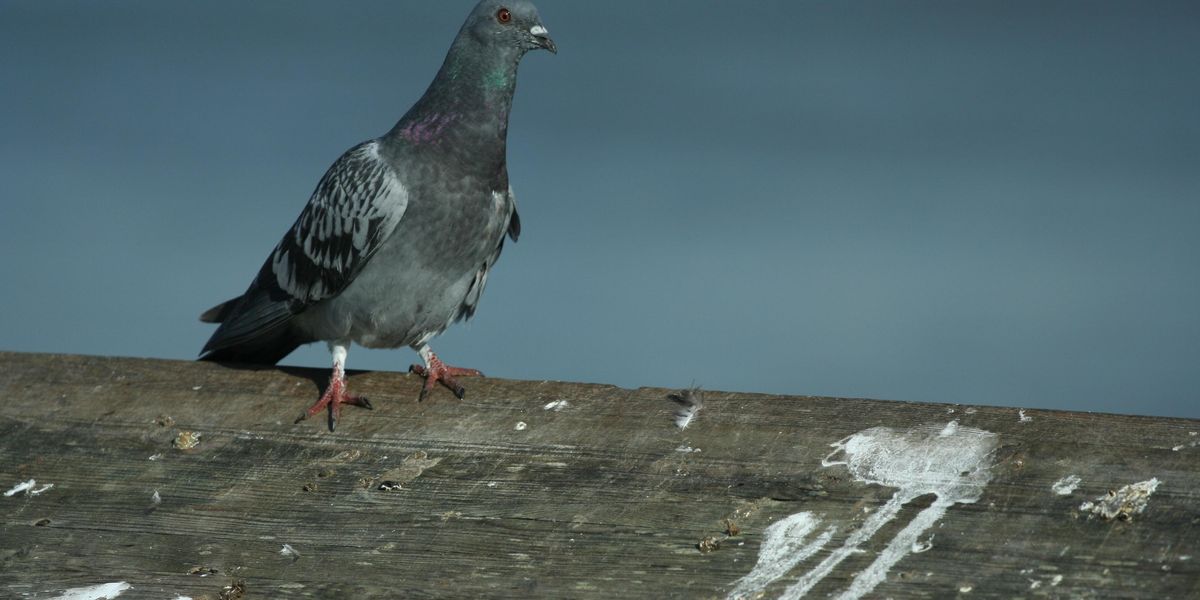
Feral pigeons are responsible for over a billion dollars of economic losses here in the United States every year. They’re especially annoying because the species isn’t native to this country—they were brought over from Europe (where they’re known as rock doves and are still quite annoying) because you can eat them, but enough of the birds escaped and liked it here that there are now stable populations all over the country, being gross.
In addition to carrying diseases (some of which can occasionally infect humans), pigeons are prolific and inconvenient urban poopers, deploying their acidic droppings in places that are exceptionally difficult to clean. Rooftops, as well as ledges and overhangs on building facades, are full of cozy nooks and crannies, and despite some attempts to brute-force the problem by putting metal or plastic spikes on every horizontal surface, there are usually more surfaces (and pigeons) than can be reasonably bespiked.
Researchers at EPFL in Switzerland believe that besting an aerial adversary requires an aerial approach, and so they’ve deployed an autonomous system that can identify roof-invading pigeons and then send a drone over to chase them away.
Drones, it turns out, are already being used for bird control, but so far (for a variety of reasons) it’s with an active human pilot using a drone to scare flocks of birds at specific places and times. One of the reasons for this is because it’s illegal (or at least a major administrative headache) to fly drones autonomously anywhere, and Switzerland is no exception, which is why this research involved a human supervisor on standby, ready to jump in and take over should the otherwise fully autonomous system suffer some sort of glitch.
At first glance, you might think that the ideal system for drone-based bird deterrence would be completely self-contained, with a patrolling drone using a camera to detect wayward avians and then chasing them off. But as the researchers point out, such a system is not very practical. Roofs can be big, pigeons are small, and drone-based cameras are smaller still and will suck down power doing onboard pigeon detection. Plus, the drone will waste most of its time not finding birds and will need to recharge frequently.
A better solution is a base station with a dedicated high-resolution pan-tilt-zoom camera that can survey as much roof as possible without having to move. When pigeons are spotted, the drone (a Parrot Anafi) gets dispatched to the spot, spending a minimal amount of time in the air. Note that there’s only a single (monocular) camera involved here, but fortunately, pigeons are mostly the same size so it’s possible to make a fairly accurate estimation of distance based on apparent bird height.
Testing on the roof of the SwissTech Convention Center in Lausanne revealed some issues with the autonomous pigeon detection system, mostly because within a pigeon flock you get a whole bunch of pigeons that are occluded by other pigeons, so if your detector is trying to figure out whether a flock is worth going after depending on the number of individual pigeon detections, you might run into some trouble. But even so, the overall system was quite successful—on average, a pigeon flock could spend up to 2.5 hours just chilling on the roof and (probably) pooping a whole bunch. When the drone was airborne, though, the maximum bird loitering time was cut down to just a couple of minutes, which includes the several minutes it took to do the detection and actually launch the drone.
The researchers also noticed some interesting drone-on-bird behaviors:
Several interesting observations regarding the interactions of pigeons and the drone were made during the experiments. First, the distance at which pigeons perceive the drone as a threat is highly variable and may be related to the number of pigeons. Whereas larger flocks were often scared simply by takeoff (which happened at a distance of 40–60 m from the pigeons), smaller groups of birds often let the drone come as close as a few meters. Furthermore, the duration in which the drone stays in the target region is an important tuning parameter. Some pigeons attempted to return almost immediately but were repelled by the hovering drone.
The researchers suggest that it might be useful to collaborate with some zoologists (ornithologists?) as a next step, as it’s possible that “the efficiency of the system could be radically changed by leveraging knowledge about the behaviors and interactions of pigeons.”
Source: IEEE Spectrum Robotics
